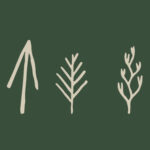Call for reports of red squirrel sightings across the Highlands to boost reintroduction project
We are asking people across the Highlands to report sightings of red squirrels for the Great Scottish Squirrel Survey from 21-27 September.
The rewilding charity wants to increase sightings of the animals across the region during the week and beyond – whether in gardens, local communities or in woodlands.
The Great Scottish Squirrel Survey takes place during National Red Squirrel Week, and is important for assessing how Scotland’s red squirrels are faring.
Thanks to a pioneering red squirrel reintroduction project being run by Trees for Life – which so far has relocated reds to nine Highland woodlands from which they have been missing for decades – there are now increasing opportunities to spot the much-loved mammals in the region. Sightings are also important for the reintroduction project’s long-term success.
“We are asking as many people as possible to report their red squirrel sightings during the Great Scottish Squirrel Survey, and afterwards too. Every reported sighting is citizen science in action – vital for monitoring our reintroduced red squirrel populations and to see how far they are spreading,” said Becky Priestley, Trees for Life’s Red Squirrel Project Manager.
“Our long-term goal is for as many of the reintroduced populations to link up as possible. Sightings are invaluable because they help us know whether reds are still present at the original release sites, how far they are travelling to colonise new woodlands, and if they are breeding.”
Urgent action is needed to secure the long-term future of the increasingly rare species in the UK, where only an estimated 138,000 survive – including some 120,000 in Scotland. Their numbers have been decimated by reduction of their forest homes to isolated fragments, and by competition and lethal disease from grey squirrels, which were brought to the UK from North America in the 1870s.
Although reds were previously present in the northwest Highlands, they have been missing from the region for several decades. Trees for Life has been giving them a helping hand by relocating reds from their strongholds in Inverness-shire and Moray to fragments of suitable forest where they can spread, safe from threats from grey squirrels.
Since 2016, the charity has released more than 170 reds across seven sites in the Wester Ross area – Ben Shieldaig, Coulin Estate, Plockton, Inverewe Gardens, Attadale, Letterewe and the Reraig peninsula – as well as at Spinningdale in Sutherland and, most recently, further south at the Ardtornish Estate at Lochaline on the Morvern peninsula.
Animal welfare is paramount during the reintroductions. The squirrels are transported in hay-lined nest boxes that are fixed to trees at the release sites, with grass-filled exit holes allowing the squirrels to leave when ready. Food is provided for several months as the reds get used to their new habitat.
Only small numbers of squirrels are removed from any site, leaving donor populations unaffected. Health checks ensure that only healthy animals are introduced to new populations.
Thanks to previous sighting reports from the public, Trees for Life knows that all of the new populations of squirrels are flourishing, and are expanding throughout the available habitat.
They are also known to be breeding successfully. Sightings have already confirmed breeding at the charity’s two latest release sites, Spinningdale – where reds were released last autumn – and Lochaline, where they were released in March this year before the Covid-19 lockdown.
Becky added: “We’re fascinated to see if the reintroduced reds will make it as far as Lochcarron or Gairloch, or if a population forms around Kinlochewe and into Beinn Eighe. Maybe the new Balmacara population will spread east and cross the Dornie bridge into Inverinate and beyond. A big question is whether any will make it over onto Skye!”
People from all over Scotland can take part in the Great Scottish Squirrel Survey, which is run by Saving Scotland’s Red Squirrels – a partnership project working to ensure red squirrels continue to be a part of Scotland’s special native wildlife.
Trees for Life is keen to hear of sightings from all over the Highlands, as well as around its squirrel reintroduction sites. Sightings should be reported via scottishsquirrels.org.uk.
Everyone taking part will be doing a small act to help protect one of our most loved yet threatened species.
Autumn is a particularly rewarding time of year for squirrel spotting. Squirrels are often more visible as they busily forage the autumn harvest in preparation for the winter ahead.
Downloadable resources with information on how to spot signs of red squirrels, as well as games for all to enjoy, are also available here.
Trees for Life is dedicated to rewilding the Scottish Highlands. Its volunteers have established nearly two million native trees at dozens of sites, encouraging wildlife to flourish and helping communities to thrive.

